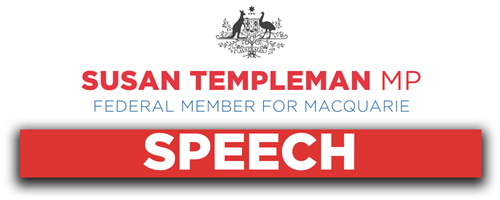
That this House notes:
(1) that the arts and cultural sector provides benefits far beyond the arts community itself;
(2) that cultural activities make a tangible and valuable contribution to policy objectives in areas such as health, mental health, social cohesion, regional development, tourism, foreign affairs, disability support, skills development, education, environmental stewardship and issues affecting First Nations Australians;
(3) that the new National Cultural Policy, 'Revive', takes a whole of government approach that emphasises the potential of the arts to serve public policy objectives across a range of portfolios and advances a cross portfolio commitment to creative endeavour;
(4) that the Government recognises the centrality of the arts to our national identity, community life and individual wellbeing; and
(5) Revive will provide new investment and new vision for the cultural sector, to begin repairing the damage caused by a decade of neglect of the arts by the previous Government
It's fair to say that the arts did not thrive under the former government, who failed to recognise their true value. They saw them as a charity case, an indulgence or sometimes a punching bag when it served their political agenda. The Albanese government takes a different approach. We recognise the value of art for art's sake but also acknowledge that the arts deliver benefits far beyond the arts community itself. We recognise that the arts make a tangible and valuable contribution in areas like education, health, mental health, the environment, foreign affairs and trade, tourism and regional development, and in issues affecting First Nations Australians. Our new national cultural policy, Revive, acknowledges this, and we will play a national leadership role in fostering collaboration across portfolios and coordination between all levels of government.
I want to start with education. This weekend, I saw Winmalee High School's production of Matilda. Even if Max Jackson, who plays the unlikeable Mr Wormwood, hadn't name checked me in the song 'Telly', which argues that you learn more from television than you do from books, it's clear how much richness, joy and pride students, parents and teachers get from being involved in school musicals. But it ignores the growth that also occurs during the process—the lessons in collaboration, in hard work and in the sense that something that typically seems a local mess to start with can, with determination and. persistence, become an amazing performance, as it was on Saturday night.
So it's no surprise that we see an important role for education as part of our support for the arts, and vice versa. One example is that we're providing $2.6 million to support specialist in-school arts education programs, particularly for areas of identified disadvantage. We're providing the funding for the Australian Youth Orchestra's national music teacher mentoring program to help generalist teachers enrich music education practice in their classrooms. We're also supporting 60 primary schools around Australia to teach local First Nations languages and cultural knowledge in those schools.
But the arts reaches across many other portfolios, and under Revive, in health and mental health, there's recognition of the intersection of the two. We're providing pilot funding of $4.2 million to support access to art and music therapy programs and generate valuable data on the broader community impacts of that and the demand for those services. In other portfolio areas, there's funding for health related arts programs. For example, through the Veteran Wellbeing Grants program, the Penrith based Nordoff-Robbins Music Therapy Australia has received $98,000 for a program called Guitars for Vets, a community based music and wellbeing program I'm looking forward to seeing rolled out in my neighbouring electorate.
When we turn to the environment, we recognise that the two, arts and environment, are really closely linked. One of the initiatives in Revive is to establish artist residencies to visit to World Heritage sites in Australia to produce artworks that help share the intrinsic value of Australia's natural and built heritage. We know the power of the arts to attract tourists, and our new funding of landmark cultural spaces like the National Aboriginal Art Gallery in Alice Springs and the Aboriginal Cultural Centre in Perth will stimulate domestic and international tourism.
I visited many disability services as Special Envoy for the Arts, where the making of art, whether it's visual arts or drama, movement and filmmaking, like at Bindi and Incite in Alice Springs, brings many benefits to participants and their families. Last month the Department of Social Services announced more than $1 million in funding for arts projects to support young people aged 12 to 18 years, people with disability, people with mental health issues, vulnerable women and unemployed people, including things like Big hART for First Nations youth in outback Western Australia, Circus Nexus across Melbourne, and Bus Stop Films in Sydney and the Illawarra. This is what a whole-of-government commitment to creative endeavour looks like, and it's encouraging to see funding flow towards arts projects in this way. The Albanese government doesn't see the arts as an optional extra, as something that you tack on when there's a bit of money left over. It's not just a 'nice to have'. We see culture and creativity as central to our quality of life and our identity. We see the arts as a powerful force for positive change across many policy areas.


